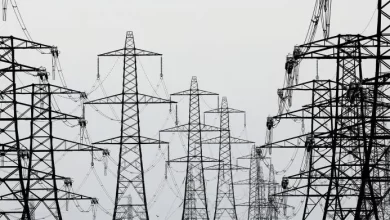RISK AND ECONOMY: Auto Claims Procedure

By Ade Fashola
Dear Readers, this week I actually struggled between the continuation of my story and answering questions from the readers. No, I haven’t forgotten my promise to discuss how you should go about your claims and how the insurance companies process it. Yes, I will discuss about life insurance, yes I will talk about loss of job or salary protection insurance and more. Please pardon me to let you know that except for the story about my encounter with Femi titled “The Withes Influence”, other articles were on demand of the Editor in Chief. Nevertheless, we have reached a compromise that this week I will be able to manage our readers’ expectation by sharing the schedule with you every month such that everyone will know what to expect every week. This week’s topic is Auto Claim procedure while the coming next 2 weeks will be continuation of our opening story followed by Editor’s demand. Thank you for your understanding.
What is the safe way to go about auto insurance claim?
The first thing to do is to find a way as soon as possible to report your claim to the insurance company. It is the responsibility of the insured to intimate the insurance company of the occurrence of loss or damage to the insured vehicle. The insurance company would briefly initiate process check whether the policy has been issued by their company or the policy is still in existence or premium has been received to date or the peril causing loss/damage is an insured peril. The insurer may ask for some other input about the insurance claim which he thinks necessary for processing the claim further. If on receipt of the additional input, the insurer is still not satisfied or the necessary elements of insurance are not present, it may repudiate the claim and inform you of the reason for the repudiation.
If the insurer is satisfied with the initial check, the insurer initiates the second stage or step for claim processing which is appointment of loss surveyor/loss adjuster/loss assessor/investigatordepends on their term. The insurer would immediately arrange for an appointed surveyor who would look into the circumstances of the loss, assess the actual loss suffered in monetary terms and advise the insurer regarding compliance of the various terms and conditions, warranty or endorsement under the contract. The loss adjuster may advise the client on various aspects of loss mitigation, limitation and salvage. Loss investigation includes forensic investigation and analysis that may also come under the purview of a professional investigator. A quick acid tests applied by the surveyor of the various principles like insurable interest, utmost good faith, proximate cause and of course contribution, help in deciding ultimately, if a claim is payable as well as amount payable.
Once the loss adjuster submits his or her report to the insurer, the insurer will activate the third phase which is Settlement of claims. Settlement of claims depend on (a)Vehicle Accident Claims, the insured gets the details of the surveyor’s report. In case of major damage to the vehicle, the insurer arranges for a spot survey at the site of accident. The insured can undertake repairs only on completion of the survey. Once the vehicle is repaired, the insured should submit duly signed bills to the insurance company. In some cases, companies have the surveyor re-inspect the vehicle after repairs. In such a scenario, the insured should pay the workshop/garage and obtain a proof of release document (this is an authenticated document signed by you to release the vehicle from the garage after it is checked and repaired). Once the vehicle has been released, the insured should submit the original bill, proof of release, and cash receipt from garage to the surveyor. The surveyor sends the claim file to the insurance company for settlement along with all the documents upon which the insurance company reimburses the insured. In case of an accident, the insurance company pays for the replacement of the damaged parts and the labor fees. The costs that the insured has to bear include the amount of depreciation as per the rate prescribed, reasonable value of salvage, deductible, compulsory excesses levied by the insurer. The insurer may pay the insured or claim money is paid directly to the workshop or garage. If otherwise, the claim amount is paid to the insured. The insurer would ensure claims are settled on the receipt of the final report from the surveyor, generally within the time frame stipulated by insurance guidelines or laws.
(b) Third Party Insurance Claim
In the event of a third-party claim, the insured should notify the insurance company in writing along with a copy of the notice and the insurance certificate. The insured should not offer to make an out-of-court settlement or promise payment to any party without the written consent of the insurance company. The insurance company has a right to refuse liabilities arising out of such promises. The insurance company will issue a claim form that has to be filled and submitted along with the police report. In the event of litigation arising, the insurance company will appoint a lawyer in the defense of the insured and insurer. The insured is expected to cooperate with the insurance company by providing evidence during court proceedings. If the court orders compensation, the insurance company will then do it directly.
(c) Auto Theft Claim
In the event of vehicle theft, the insured should lodge a report with a police station immediately, inform the insurance company and provide them with a copy of the report. Insured should also submit the Final Police Report to the insurance company as soon as it is received and extend full cooperation to the surveyor or investigator appointed by the company. After the claim is approved, the Registration Certificate of the stolen vehicle has to be transferred to the name of the company and the insured needs to submit the duplicate keys of the vehicle along with a letter of subrogation and an indemnity on stamp paper (duly notarized) to the insurance company.
Finally, I will close this section with “Recovery” known as Subrogation. The next step for the insurer, in certain cases is initiating a process of recovery from the third person who is responsible for the loss except in auto third party liability claims.





